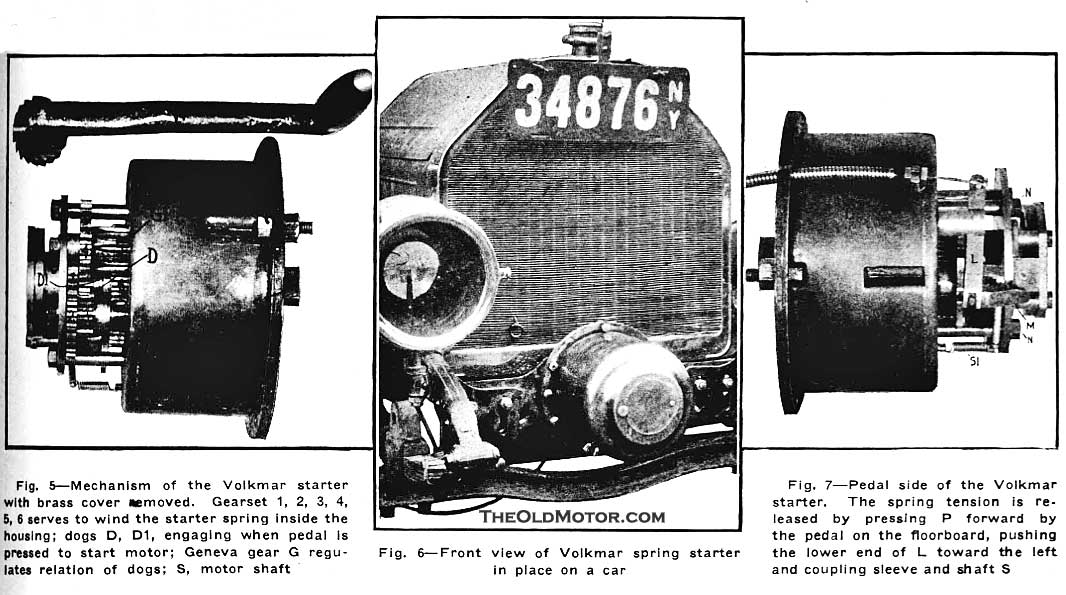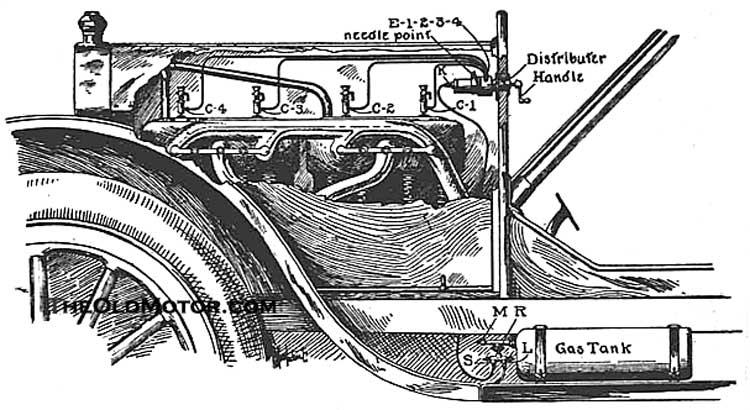Belle Isle and the Self-Starter[edit]
Early automobiles required a hand crank to create a sufficient charge to start ignition. Occasionally, when the spark lever was not properly set, the hand crank kicked back, causing serious injury: a broken wrist, arm, or shoulder. On a winter night in 1908 the result was much worse.
Byron Carter, founder of Cartercar, came across a stalled motorist on Belle Isle in the middle of the Detroit River. He gallantly offered to crank the car for the stranded driver. When she forgot to retard the spark, the crank kicked and broke Carter's jaw. Complications developed and Carter later died of pneumonia. When Cadillac chief, Henry Leland, heard the news, he was distraught. Byron Carter was a friend; the car that kicked back was a Cadillac. "The Cadillac car will kill no more men if we can help it," he told his staff.[11]
Leland's engineers were able to build an electric self-starter but not small enough to be practical.[12] He called Charles Kettering. The engineers at Delco worked around the clock to get the job done by the February 1911 deadline. Kettering later described their work thus: They didn't have a job so much as the job had them.[13]
Kettering's key insight lay in devising an electrical system that performed the three purposes it continues to serve in modern cars: starter and, as generator, producer of spark for ignition and current for lighting.[14] Leland approved their product for his 1912 model and placed an order for 12,000 self-starters. Delco, the research and development outfit, had to quickly learn the business of production.
Kettering's self-starter won a Dewar Trophy in 1913.[15]




